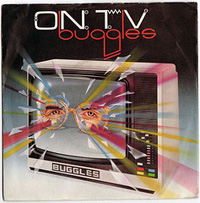
All the media heat these days is around online video and the YouTube phenomenon. Presidential candidates are sparring through YouTube. Google pays a bundle to buy YouTube, and then Viacom sues for $1 billion. It all makes the online audio phenomenon of podcasting feel like yesterday’s news.
Audio fans, however, need not despair. Video may have stolen the media attention and the growth momentum, but audio will survive and thrive, just as radio survived the onslaught of television in the ’50s. Episodic video blogs or shows such as Ask a Ninja will continue to score big in entertainment and comedy, while audio podcasts will stay informative and become even more educational, remaining a constant companion in the car, during exercise workouts, or in the background at work.
Comparing video usage to audio usage online is almost impossible because of technical issues and the difficulty of tracking what happens to podcasts after they’ve been dowloaded. Ratings services such as Nielsen//NetRatings and comScore Media Metrix are trying to gauge video viewership but these efforts are complicated by factors such as: competing video formats; streaming video numbers vs. video downloads that may not be played; and video players that play automatically when a user visits a web page (though they may not be watched). The same problems have plagued audio.
Nielsen//NetRatings @Plan recently did a quarterly survey of online adults (18+ years) in the U.S. and found that 6.7% (9.7 million) had downloaded an audio or music file to their computer in the past 30 days, 4.6% (6.7 million) had downloaded a video file, and 39.2% (56.7 million) had watched or listened to streaming audio or video.
eMarketer estimates that 107.7 million people in the U.S. watched online video at least once a month in 2006, while Edison Media Research recently found that 13% of Americans had ever listened to a podcast — up only slightly from 11% in the 2006 survey. That gloomy report for audio podcasts follows an equally uninspiring report from the Pew Internet & American Life Project that found that 17 million people had ever listened to a podcast as of August 2006. That’s a large number for a medium that largely didn’t exist a few years ago, but it’s half the number of unique visitors — 34 million — who went to YouTube last month, according to comScore.
[See more numbers below in an UPDATE to this blog post.]
Despite all the buzz around video, National Public Radio (NPR) continues to see growth with its iTunes-leading audio podcasts. Maria Thomas, vice president and general manager of NPR Digital Media, told me she hasn’t seen evidence of video cannibalizing the time people spend with NPR podcasts.

“I’m not seeing metrics from our experience with podcasting or on iTunes or anecdotally that would suggest that people are leaving audio for video,” Thomas said. “In the lineup at iTunes, five of the top six are content from NPR or public radio…Those are full radio programs and are not original podcast content or pieces from a show like ‘Story of the Day.’ So people are likely interested in this as a convenience and for time-shifting. As for our numbers for total downloads…I’m not seeing a diminishment as video has come on. We’re still on a growth curve with podcasts.”
Still, NPR does help distribute a video podcast from KCRW, Morning Becomes Eclectic, and will increasingly use video on its NPR.org website, according to Thomas. “I think of it as mostly a niche strategy,” she said. “I don’t see us trying to compete with AP news video.”
Videos Blowing Up Big
While audio podcasts continue to enjoy a healthy audience, there’s no denying the momentum of video. In press coverage for 2006, the term “YouTube” alone was mentioned in 18,500 stories, according to a Google News Archives search, while the term “podcast” was mentioned in 20,200 stories last year. But in the last month, YouTube was mentioned in 15,888 stories — likely due to the Viacom lawsuit — while “podcast” was mentioned in only 3,556 stories.
Tim Bourquin, a longtime audio podcaster who started the Podcast and New Media Expo, says that his show has gone from being 100% about audio to an even split this year between audio and video.

“We’re emphasizing video a lot more because that’s most of the questions we’re getting these days,” Bourquin told me. “People are sure talking about video more and that’s why we’re focusing on it more at our show. Two of our tracks at the show are about video exclusively and Revver is a gold sponsor. And there will be more video tools in the conference hall. But we’ll have both video and audio. We used to focus almost exclusively on audio but now it’s about 50/50.”
Liberated Syndication, a.k.a. LibSyn, which offers hosting for audio and video podcasts, has also seen a huge jump in the demand for video podcasts. In the last six months, the site’s audio downloads have increased by 35%, but the video downloads were up a whopping 118%. What’s interesting about that video consumption growth is that the actual number of shows produced continues to be dominated by audio, but video is more popular in downloads per show.

“By the nature of our lifestyles, there’s more time for us to listen to audio,” LibSyn co-founder Dave Mansueto told me. “But the video shows that blow up really blow up.”
Some of the more popular episodic online video shows skew to entertainment and comedy, such as Goodnight Burbank, Ze Frank, and Rocketboom. Rocketboom founder Andrew Baron said he hasn’t really considered doing audio podcasts outside of some personal extras or taped conversations.
“The video medium is just so much more powerful in getting a message across or influencing someone,” he said. “It’s more impactful. If we did both audio and video, I think the video would be more powerful for communicating information. When we’re doing a specific story, we can show a bit of it while doing a voiceover. The audio podcast doesn’t feel as new or fresh.”
Versatility, Education of Audio
Still, audio podcasts continue to enjoy advantages over video for people on the go, and for those who want to learn a new language while commuting. Rob Walch, who founded the podcast hub Podcast411, explained the versatility of audio.
“YouTube stole thunder away from podcasting in general,” he said. “That said, when you look at how people are consuming media, podcasting is about time-shifting, and there’s much more time in the day that you can consume an audio podcast. You can’t consume video while driving in the car. You can consume while you’re at work and have it on in the background, while you’re out jogging or walking the baby. Those are opportunities where you can listen to an audio podcast vs. video.”
Plus, putting together a professional audio podcast takes less time and resources than video, where you might spend hours on video editing alone, including computer processing time. Walch has what he calls the “5-1-5 Rule” for choosing your format.
“If you have a bit of information you want to get out, it might take you five minutes to create a blog about it, it would take you one hour to create an audio podcast, or it would take you five hours to do it as video,” he explained. “Audio podcasting takes a lot less production effort and time than video. I ask people who want to do video, ‘Is there a compelling reason you want to do video other than that you just want to do video?’ Business podcasts make more sense in audio than in video. You’re just trying to convey a message.”

Dan Colman, who runs the Open Culture blog as well as a library of podcasts, admits that our society long ago became hooked on short-form videos with the rise of MTV. But he still holds out hope for the increasing depth of audio podcasts.
“I’m finding that podcasts tend to have more cultural and educational depth than what I’m generally finding in the streaming video world,” he said via email. “And while I don’t think that podcasting will realistically catch up with streamed video, I do think that the gap will get closed to a certain degree (perhaps more than we think) as iPods eventually penetrate our society as thoroughly as the computer and web have, and as users learn to take full advantage of MP3s.”
So what will be the next breakthrough moment for online video or for audio podcasting? NPR’s Thomas believes that the smartphone, and perhaps the Apple iPhone, could end up producing a killer app for audio content. “You do have your phone with you all the time and it’s inherently an audio device,” she said. “We focus so much on the iPod and the experience on the iPod is usually music. But the phone could play a much more intuitive role…if you can have the phone in your ear or on speaker, and you can bring up what you want to listen to when you want.”
As for video, LibSyn’s Dave Mansueto says that the video iPod was a huge catalyst for all the independent video podcasts that were highlighted on iTunes. Mansueto said that the introduction of Apple TV, pushing Internet content to the TV, could lengthen the bite-sized nature of online video.
“The Apple TV might not have the same appeal as the video iPod, but if everyone who has spent money on iPods and docking stations and everything else goes out and buys Apple TV to get their [Internet] shows in the living room, we could see another significant jump.”
What do you think? Have you given up on any audio podcasts in favor of video shows? What are the times you enjoy audio vs. video and how might that change due to technology coming down the pike? Share your thoughts in the comments below.
Photo of Buggles “On TV” 45 record cover by ocad123.
UPDATE: Since I’ve posted this, more numbers for online video and podcasting have come in, along with a nice comment via email from Lee Rainie, director of the Pew Internet & American Life Project:
I would guess that both trends — more video and more audio — will continue for the foreseeable future. And I would suspect that people would begin to sort them in their Internet use the way they sort them in their non-Internet use. Video is great for some kinds of experiences and information; and audio is great for other kinds of experiences and information. So, there is less of a horse race here than I think your question implies (“steal the thunder”). Just as video is used more by people offline, I think it will be used more by people online. But that doesn’t imply there is a diminishing role for audio. It just means that the best audio will serve very different leisure and learning needs from the best video. Radio didn’t go away after TV became a mass-adopted medium. It changed.
So true. Rainie also gave me a preview of survey results regarding video usage online:
We did a survey in February and found that more than half of all U.S. Internet users have watched video online and about two-thirds of broadband users have done so.
Rainie said the full results of the survey will be out in a few weeks. comScore’s newish Video Metrix service, meanwhile, released numbers showing even more online video usage by U.S. Internet denizens:
In January, nearly 123 million people in the U.S. (70% of the total U.S. Internet audience) viewed 7.2 billion videos online. The average video streamer viewed 59 streams during the course of the month — nearly two videos per day — and viewed an average of 151 minutes of video online during the month, with the average viewing time per video registering 2.6 minutes.
On the audio podcasting side, Tom Webster of Edison Media explains quite eloquently the mixed results of the recent “Arbitron/Edison Internet and Multimedia 2007” study. The top-line results are that 37% of Americans have now heard of podcasts, up from 22% last year. But usage was only up to 13% of Americans having listened to an audio podcast, and 11% having watched a video podcast, up from 11% having heard a podcast last year and 10% having watched a video podcast. Those numbers barely budged, but Webster notes that podcasting usage is about equal to satellite radio — without the benefit of marketing or Howard Stern:
One thing that podcasters simply have to come to grips with is the difficulty in introducing a new technology or a new medium to the mainstream population. Though long-time podcasters are tired of hearing this, and probably rejected it two years ago, there is no question that a good chunk of people who might otherwise be interested in podcasts believe that an MP3 player (and, specifically, an iPod) is required to listen.
The obvious problem is that far, far more people are interested in podcasting’s central propositions (time-shifting and ad-skipping audio content) than own an iPod — or indeed, will ever own an iPod. Most would contend that the train has already left the station on the name “podcasting,” and I am not sure I disagree with that, but clearly there is significant work to be done to make it easier and more digestible for the average citizen. For those of you that wonder why a couple hundred million Americans just don’t “get” podcasting, I would humbly counter-propose that you just don’t “get” hundreds of millions of people.
Look at TiVo. How long did that take to work its way into the parlance of mainstream America? It was several years before all but a few early adopters could even explain what it did, let alone why you needed one. Even today, though “everyone you know” may own a DVR, the reality is most people don’t. Podcasting is in a similar boat, and even though you don’t need to buy a “black box” like a DVR to make it work, you still need to choose from a bewildering array of software and hardware combinations, many of which just don’t work as well as they should. Certainly, the mobile phone may be to podcasting what cars are to radio — when it comes installed, standard, on every phone you buy, folks will start to “get it.” Better yet, when all of our radios are equipped with WiFi access and RSS readers, few may even realize that they are listening to time-shifted content instead of live radio. That will not happen overnight, this year or even next. But it will happen.
This is great stuff. I highly recommend that anyone interested in the future of radio subscribe to Webster’s excellent The Infinite Dial blog.

I’ve wondered about the very thing. I didn’t think that video could be so popular given the waiting issue that kicks in to listen to longer programs. Nonetheless, I find it absurd that people will offer you a single camera taping of a lecture when it’s obviously better suited to straight audio. The problems with video are self evident:
(a) when watched on the web you have to stay on that page/tab
(b) when watched away from the computer you need a portable device that has a large enough screen to fully enjoy your vid experience
However the key question to me is not either or but whether it’s to be a RSS experience — either video or audio — or something else, and I tend to think both media forms face the same problem in that regard.
Excellent post!
I’ve run through this debate on numerous occasions recently, and you’ve summarized my exact thoughts/position extremely well.
Regardless of the resulting numbers, I’m excited to both witness and take part in the shakedown. This is getting more and more interesting by the day.
Best Regards,
[email protected]
as a web designer / animator the best thing about audio is you can put headphones on and listen to downloaded podcasts at work… an effective way to “feed ya mind” whilst being a productive employee. Can’t do that with a video
Video won’t kill podcasting for me — because I can’t watch YouTube videos while I’m driving. The main reason I subscribe to podcasts is because they provide me an escape from crappy commercial radio in my car.
Among the user-generated media, podcasting is the one that’s truly mobile. Used to be, if we wanted to get away from mass media and into niche stuff we liked better, we needed to be tethered to our computers. Podcasts, combined with a portable MP3 player, is like a spacesuit that allows us to venture out into the hostile vacuum of commercial media-space, while taking a little of our own “air” with us.
(BTW, at least for me, some of that is time-shifted content from traditional media organizations; I’d say it’s about 80% independent podcasts and 20% podcasts from existing traditional media organizations, and almost all of that 20% is from NPR.)
At the Liverpool Echo we are just beginning to experiment with podcasting – we’ve been streaming video for two years or more. So we’re doing things about face. In the UK the primary motivator would be for people on the go – in cars, jogging, in gyms. The holy grail would to replicate the success of Ricky Gervaise – the comedian – whose paid-for podcasts have achieved astonishing take-up.
http://echoeditor.merseyblogs.co.uk
what if you want to play movies, TV shows, movie trailers, podcasts, photos, and YouTube videos from your computer on your TV? In 40GB and new 160GB models starting at $299, Apple TV brings iTunes and more to the big screen.
I would humbly counter-propose that you just dont get hundreds of millions of people.
this shit is gay what the fuck u guys r lame